What Is Autumn Crocus: Growing Information And Care Of Autumn Crocus Plants
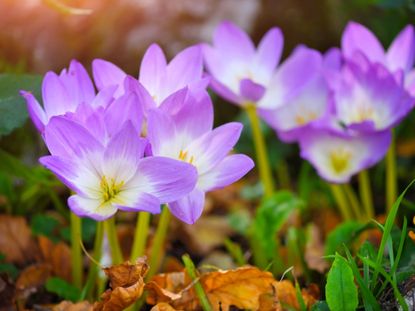

A charming addition to your fall flower bed, autumn crocus bulbs add unique color when much of the garden is getting ready for its long winter nap. Let's learn more about growing autumn crocus.
What is Autumn Crocus?
The autumn crocus or meadow saffron is a member of the lily family (Liliaceae), not to be confused with its look alike, the spring-flowering crocus, which is a member of the Iris family (Iridaceae). Hailing from Europe, North Africa, and Asia, the autumn crocus is one species of around 70 in the genus Colchicum. This Colchicum has a rather unusual life cycle in that the colorful flowers appear as its name suggests, in early autumn. All parts of autumn crocus plants are toxic with resulting symptoms from ingestion similar to those of arsenic poisoning. These symptoms occur within two to five hours due to the alkaloid colchicines contained in the autumn crocus bulbs.
History of Autumn Crocus Plants
The autumn crocus has a long history as a poison. Greek slaves were known to have eaten the plant to make them sick, and even to commit suicide. Besides its use as a poison, autumn crocus bulbs have long been utilized for medicinal purposes as well. The plant was mentioned in the Ebers Papyrus, the oldest known medical text, prepared by the Egyptians around 1550 B.C. Thirty-five centuries later, we still find it in modern pharmacopeias, one of only 18 plants documented as having a history of medicinal value for such a long period of time. Today the toxin alkaloid, colchicines, is used for the treatment of acute gout, a painful inflammation of the joints. The colchicines have also been found useful in the creation of new plant cultivars by interrupting the process of cell division and, thereby, creating polyploids enabling the new species to retain the genetic information of the parent plant.
Growing Autumn Crocus
Of course, when growing autumn crocus in the garden, its medicinal properties are not favored but rather the delightful blooms. The colorful blooms of the autumn crocus initially spring from the earth without any accompanying foliage. Short lasting, they fade within two or three weeks, and then lies dormant until the following spring, at which time three to eight, 1 foot (31 cm.) leaves appear and remain until early summer. In September, the autumn crocus emerges from its hibernation to bloom once again in a profusion of clustering flowers. The autumn crocus develops from a corm, which should be planted in late summer or early fall, 2 to 4 inches (5-10 cm.) under the surface of the soil. The flowers of the autumn crocus tend to be delicate and should be protected, so situate them under low growing plants or even amid the lawn. Autumn crocus grows in a wide array of sites, from full sun to partial shade. Once planted, there is very little required as far as autumn crocus care. While they may need some water during arid conditions, they're basically maintenance free. If your autumn crocus is planted among the grass, allow the foliage to die back before mowing.
Varieties of Autumn Crocus Plants
Some autumn crocus varieties to look for are the purple-red C. agrippinum and the tulipesque blooms of C. speciosum, which are cream colored to begin with and gradually darken into their rosy purplish hues. Other cultivars of note include:
- Violet flowering ‘Autumn Queen'
- ‘Giant' with white and mauve blooms
- ‘Waterlily' with unique lilac double petals
- “Lilac Wonder' with lilac pink blooms
- Purplish mauve ‘Violet Queen' with a white center
- Violet blooming ‘Conquest'
An under used fall bloomer, autumn crocus plants are a terrific addition to the usual collection of chrysanthemums and asters favored by gardeners during the last of the growing season.
Gardening tips, videos, info and more delivered right to your inbox!
Sign up for the Gardening Know How newsletter today and receive a free download of our most popular eBook "How to Grow Delicious Tomatoes."

Amy Grant has been gardening for 30 years and writing for 15. A professional chef and caterer, Amy's area of expertise is culinary gardening.
-
 Does Gardening Reduce Carbon Footprint Size?
Does Gardening Reduce Carbon Footprint Size?If you’d like to learn how to reduce your carbon footprint on the Earth, start with your garden activities and planting decisions.
By Bonnie L. Grant
-
 How To Use Less Plastic: 5 Ways To Go Greener In Your Garden
How To Use Less Plastic: 5 Ways To Go Greener In Your GardenData on how our overuse of plastic is harming the planet may leave you wondering how to use less plastic. Here are ideas for reduced plastic use in the garden.
By Teo Spengler
-
 Crocus Bulb Storage: Learn How To Cure Crocus Bulbs
Crocus Bulb Storage: Learn How To Cure Crocus BulbsIf you choose to remove the bulbs until the next growing season, it is important to know when to dig up crocus bulbs. Learn how to cure crocus bulbs in the article that follows. Click here for more information.
By Bonnie L. Grant
-
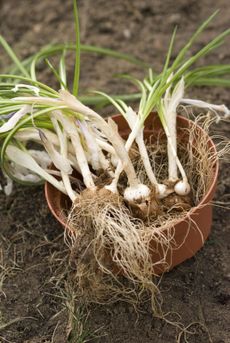 What Are Crocus Offsets: How To Dig Up Crocus Bulbs For Propagation
What Are Crocus Offsets: How To Dig Up Crocus Bulbs For PropagationCrocuses are some of the first flowers to poke their heads through the soil in early spring. Propagating crocus bulbs from division is an easy method of multiplying these enchanting flowers, and this article will help.
By Gardening Know How
-
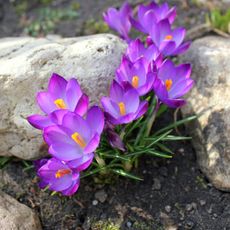 Crocus Planting Tips: Learn When To Plant Crocus Bulbs
Crocus Planting Tips: Learn When To Plant Crocus BulbsCrocuses are the first bright surprise in early spring. In order to get the cheery flowers, you have to plant some corms at the right time of the year. You need to know when to plant crocus. Read here for important crocus planting tips.
By Bonnie L. Grant
-
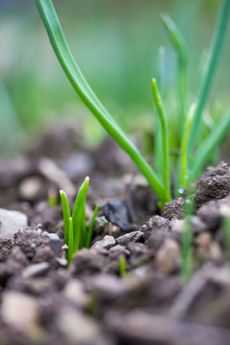 My Crocus Won't Flower: Reasons For A Crocus Not Blooming
My Crocus Won't Flower: Reasons For A Crocus Not BloomingYou did everything right. You planted the corms in fall, fluffed up the soil, and fertilized the root zone but there are no blooms on your crocus. There are several reasons for a crocus not blooming. Learn what they are in this article.
By Bonnie L. Grant
-
 Crocus In Lawns: Tips For Growing Crocus In The Yard
Crocus In Lawns: Tips For Growing Crocus In The YardEarly-spring crocus have much to offer and they needn't be restricted to the flower bed. Just imagine a lawn filled with these blooms. If you're thinking about growing crocus in the yard, there are several things to consider. This article will help.
By Mary H. Dyer
-
 Common Crocus Species: Fall And Spring Blooming Crocus Plant Varieties
Common Crocus Species: Fall And Spring Blooming Crocus Plant VarietiesWe?re all familiar with spring crocus flowers, those dependable favorites that dot the ground with bright jewel tones. However, you can also plant less familiar, fall blooming crocus. Learn more about different types of crocus in this article.
By Mary H. Dyer
-
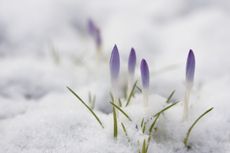 Crocus Winter Flowering: Learn About Crocus In Snow And Cold
Crocus Winter Flowering: Learn About Crocus In Snow And ColdCrocus winter flowering happens in temperate regions. It is not uncommon to see their white, yellow and purple heads surrounded by late snow. Will snow hurt crocus blooms? This article explains more about crocus cold hardiness.
By Bonnie L. Grant
-
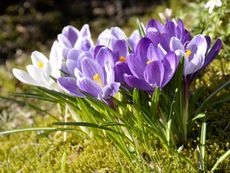 Tips For Growing Crocus In Your Garden
Tips For Growing Crocus In Your GardenOne of the first blooms to appear is the crocus, sometimes peeking up through a layer of snow with the promise of spring. Growing crocus in the home garden is easy, and this article can help.
By Bonnie L. Grant